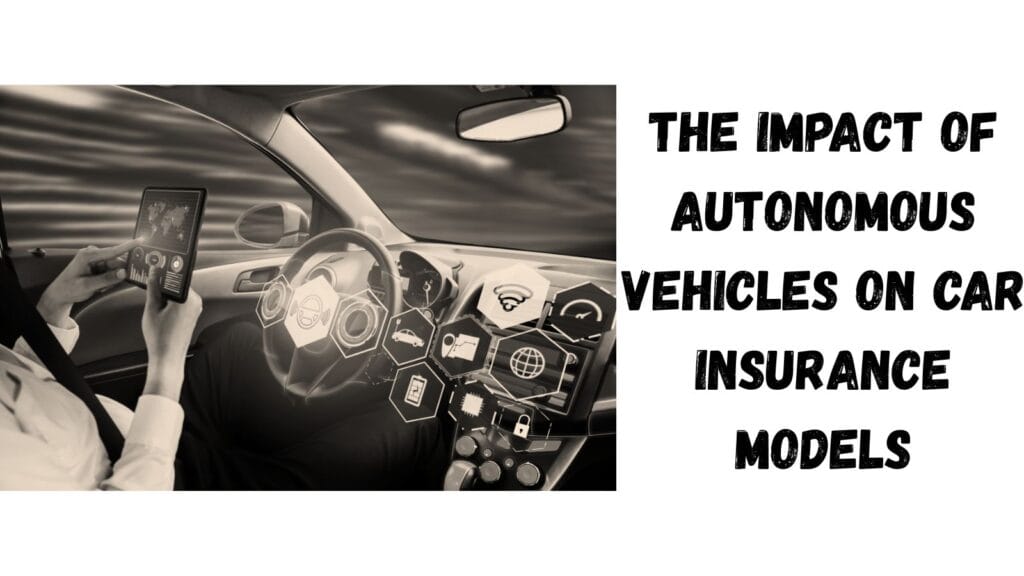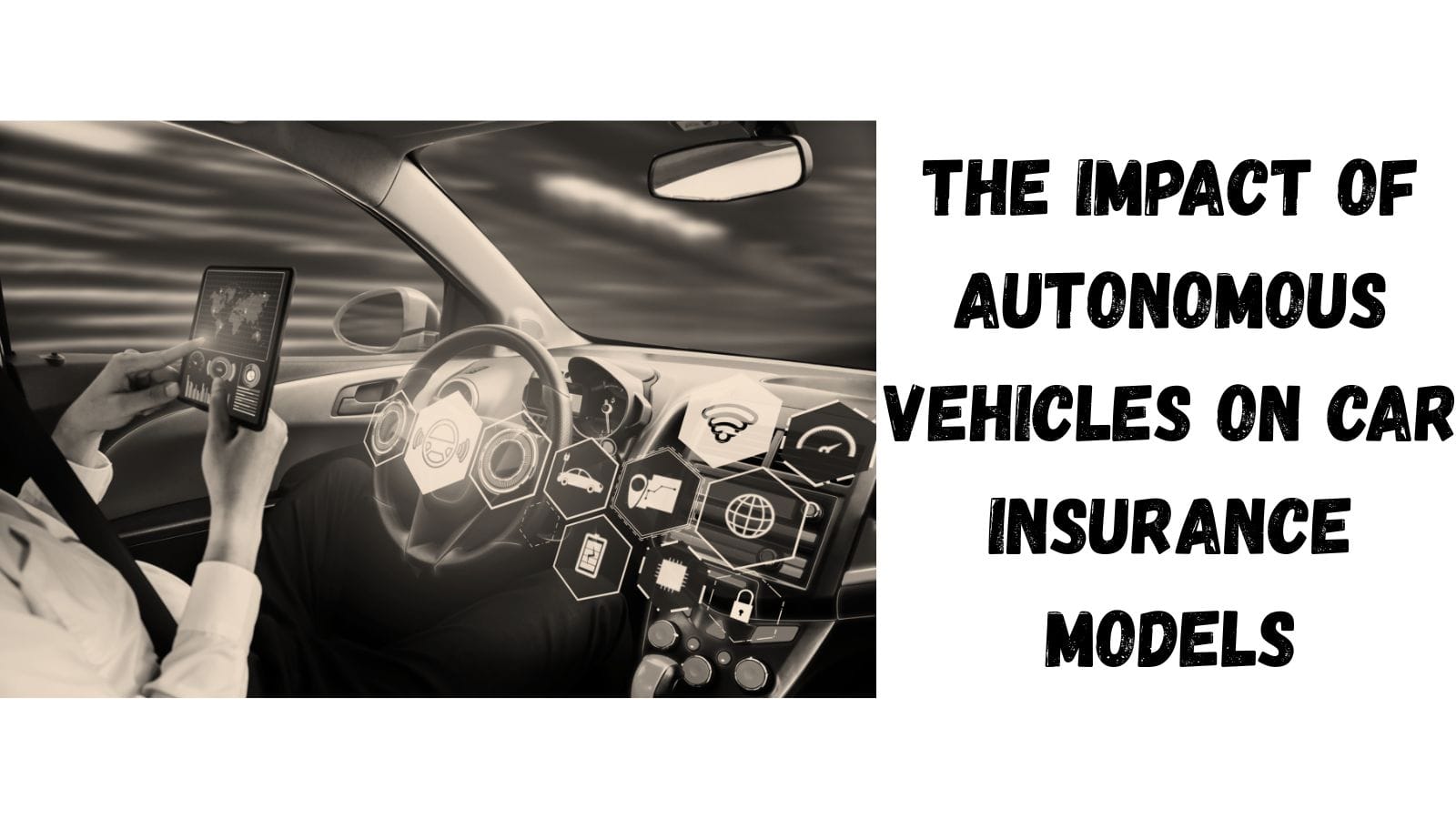Autonomous vehicles (AVs) are now a reality, not just fiction. They are making real progress. With this technological leap, the car insurance industry is poised for transformation. Traditional insurance models mainly target human drivers. They will likely change or be replaced to fit the growth of AVs. This article explores how the rise of autonomous vehicles will change the auto insurance industry.
We will cover these key points:
- Liability issues
- The shift from driver-based to vehicle-based insurance
- How insurers are preparing for AV claims
- Challenges with regulations
Car insurance is changing quickly. Insurers, consumers, and policymakers need to understand these changes.

1. Liability Issues in the Context of Self-Driving Cars
One of the most pressing questions surrounding the rise of autonomous vehicles is who will be held responsible in the event of an accident. In regular driving, the human driver is usually liable. With AVs, things get more complicated.
Who is Liable?
An accident with a self-driving car can involve several parties when deciding who is responsible. Here are some potential stakeholders in a liability case:
- The Manufacturer: If the vehicle’s self-driving system fails and leads to an accident, the manufacturer could be responsible.
- The Software Developer: Autonomous vehicles rely on software, so AI developers could be liable for any failures.
- The Human Driver: Sometimes, if a human driver takes control or overrides the AV system, they may be partly responsible.
- The Vehicle Owner: If the vehicle owner fails to maintain the AV system properly, they could be liable for an accident.
Case Study: Uber’s Fatal Crash
A well-known case of liability with self-driving cars is the tragic Uber incident in 2018. The car struck and killed a pedestrian in Arizona. The accident raised questions about who is liable. People discussed whether Uber, the car’s maker, or the safety driver would be responsible. Uber faced a lot of questions about its safety rules. It was clear that AV regulations needed to be simpler to tackle these problems.
Data on Liability Shifts
A 2021 study by the Insurance Institute for Highway Safety (IIHS) showed that 70% of people believe manufacturers should take responsibility if an autonomous vehicle crashes. This indicates a shift from traditional notions of driver-based liability toward vehicle-based responsibility.
2. How Insurers Are Preparing for Autonomous Vehicle Claims
Insurers must rethink risk assessment and claims management with the rise of autonomous vehicles. Traditional car insurance assumes human error causes most accidents. However, this is no longer true with AVs. AVs aim to reduce human error significantly.
Shifting Focus from Drivers to Vehicles
Instead of focusing on insuring drivers, insurers may shift toward insuring the vehicle itself. The risk profile of a self-driving car could be drastically different from a conventional vehicle. As self-driving cars hit the road, insurers might shift their focus. They may start insuring the technology and the systems that run the vehicles.
Advanced Telematics and Data Analytics
Insurers are already preparing for the future by investing heavily in telematics and data analytics. Autonomous vehicles collect a lot of data. This includes details about the car’s performance, how it drives, and the surrounding environment. Insurers can leverage this data to create more accurate and personalized pricing models for AV insurance. The use of advanced data analytics allows insurers to better assess risk and adjust policies accordingly.
Real-Time Claims Processing
As self-driving cars become more popular, insurers might start offering real-time claims processing. They will use connected technologies for this. When an accident happens, an AV can send data to the insurer. This data details the event and helps speed up claims assessments. Automation can lower claims processing costs and boost customer satisfaction.
Example: Waymo’s Partnership with Allianz
Waymo, part of Alphabet (Google’s parent company), teamed up with Allianz, a global insurer. They will provide insurance for Waymo’s self-driving taxis in Arizona. This partnership is one of the first where a big insurance company works with an autonomous vehicle provider. They aim to offer special coverage for self-driving cars.
3. Predicting the Future of Insurance Pricing with Automated Driving Technologies
As self-driving cars become common, insurance pricing will change a lot. Traditional pricing models are based on factors such as the driver’s age, driving history, and type of vehicle. However, with AVs, these factors may no longer be as relevant.
Factors Affecting AV Insurance Pricing
- Risk Reduction: Autonomous vehicles should cut down accidents from human mistakes. This may lower the overall risk of accidents. This reduction in risk could lead to lower premiums for AV owners compared to traditional vehicles.
- Vehicle Technology: Insurers will likely take into account the level of automation in a vehicle. A fully autonomous vehicle (Level 5) may be viewed as lower risk than a partially autonomous one (Level 2 or 3) that still requires human intervention.
- Data from AVs: Continuous data from AVs lets insurers create dynamic pricing models. They can adjust premiums based on the vehicle’s real risk, its location, and how it is used.
- Insurance Pooling: As ride-sharing companies like Uber and Lyft grow, insurance may change to fleet-based models. This could lead to shared risk across a pool of vehicles, rather than individual policies for each car.
Example: Tesla’s Insurance Model
Tesla has already begun experimenting with insurance products tailored to its autonomous vehicles. The company uses its own data from the car’s onboard sensors and AI to offer more competitive pricing to its drivers. This direct-to-consumer model skips traditional insurers. It offers pricing based on the real risks of driving a Tesla. Teslas have advanced driver-assistance systems (ADAS).
4. Regulatory Challenges in Adapting Insurance Policies for Autonomous Vehicles
Regulating autonomous vehicle insurance is an ongoing challenge for policymakers around the world. Current insurance laws focus on human drivers. They need to change for self-driving technology.
Updating Liability Laws
Most countries have yet to establish clear liability guidelines for accidents involving AVs. Insurance regulators are trying to change laws or make new ones. They focus on who is responsible if a crash happens. They also want to find fair ways to assess damages.
Data Privacy and Security
Since AVs generate large amounts of data, ensuring that this data is protected is a major concern. Insurers and car makers must team up. They need to set standards for data privacy and security. These standards should match changing laws.
Global Variations in Regulation
The regulatory landscape for autonomous vehicle insurance is not uniform across the globe. The NHTSA has issued guidelines for self-driving cars in the U.S. However, it has not fully addressed rules specific to insurance. In Europe, the European Union is working to align regulations. However, challenges still exist in matching the different laws of member states.
Example: Germany’s Autonomous Vehicle Insurance Law
Germany is one of the first countries to pass a law for autonomous vehicle insurance. In 2021, the country passed a law. This law holds manufacturers responsible for accidents caused by AVs in some cases. This sets a key example for other countries to follow.
The Rise of Insurtech: Technology Startups and Their Disruption of Traditional Insurance Models
Conclusion
The rise of autonomous vehicles is undoubtedly a game-changer for the car insurance industry. As AVs continue to evolve, so too must the models that insurers use to price and assess risk. Liability issues, data analytics, dynamic pricing, and regulatory challenges will shape the future of AV insurance.
The road ahead is complex, but it presents an exciting opportunity for insurers to innovate and adapt to the changing landscape. Autonomous vehicles may cut accidents and improve pricing models. This change could lead to a safer, more efficient, and cheaper insurance system. As technology advances, regulators and insurers must collaborate. They need to tackle new issues and keep the insurance industry ready for the future.
Frequently Asked Questions (FAQs)
Liability depends on several factors. These include if the AV was in fully autonomous mode, if the manufacturer’s system failed, or if the human driver took control. Liability might involve several parties. This could be the vehicle manufacturer, the software developer, and the car owner.
Insurance premiums for fully autonomous vehicles will likely drop. These cars should cut down accidents caused by human error. However, premiums will still vary depending on the level of automation and the vehicle’s technology.
Insurers are using telematics and data analytics. They are also improving claims processing. This helps them assess risks linked to autonomous vehicles. Some insurers are trying new models. They include vehicle-centric insurance and fleet-based coverage.
Key challenges are:
- Updating liability laws.Ensuring data privacy and security.Creating standard regulations in different regions.
Tesla provides insurance for its autonomous vehicle owners. They use car sensors’ data to set more precise insurance rates. Waymo is working with Allianz to test special insurance for its self-driving taxis.
Looking at what affects insurance for self-driving cars shows how it’s changing with new tech.
